Ubiquiti Networks made the USW-Aggregation switch the most high-performing and reliable for any business. It is a robust forward-facing switch with many 10G SFP+ ports to help better network traffic management through fiber connections. The UniFi Controller interface works with all other Ubiquiti devices, so network admins can make adjustments as needed while still having everything work together. There are no fans, so this switch doesn’t make any noise and can be put in places where it is quieter. It also takes up less space than other switches, so it can fit into smaller areas without causing problems later on when more equipment needs to be added or upgraded.
Table of Contents
ToggleWhat Are the Key Features of the USW-Aggregation by Ubiquiti Networks?
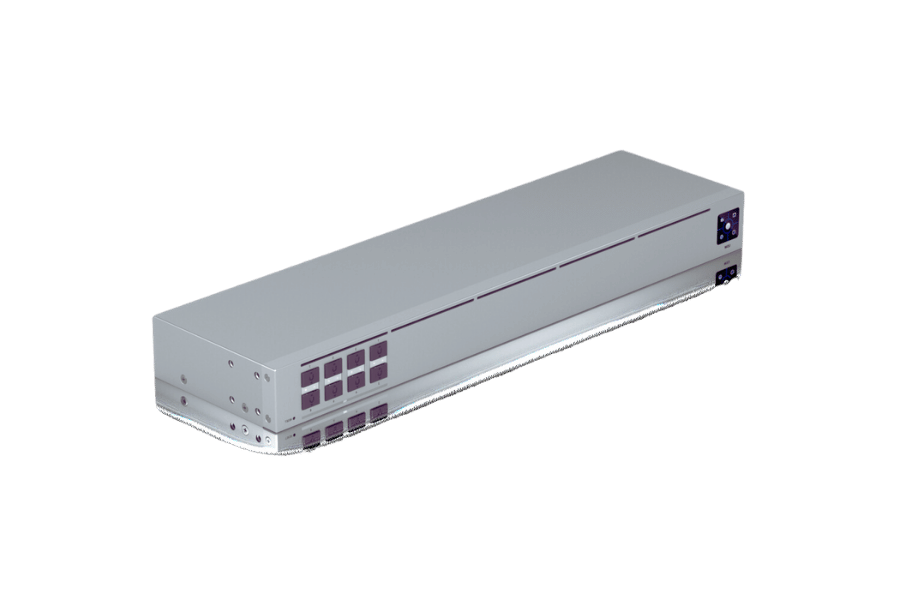
Understanding the aggregation capabilities
Ubiquiti Networks’ USW-Aggregation switch is very good at aggregating data. This allows it to combine many 10G SFP+ connections into a single, manageable network link. Such a function is essential because it helps to make the best use of bandwidth and reduce congestion on networks. Each one of its ten SFP+ ports supports high data transfer speeds, which ensure that information from different points can be combined without any hitches. The device also has some advanced Layer Two functionalities, such as VLAN tagging, link aggregation, or port isolation, that can be used for network segmentation purposes and tightening security measures where necessary. This means that the USW Aggregation enables merging multiple paths to provide fast and efficient connectivity, which is vital for enterprise-level networking needs.
Exploring the benefits of a managed layer two switch
USW-Aggregation is a managed layer two switch that offers many advantages to network administrators.
Additional Network Control and Flexibility: Managed Layer 2 switches have various characteristics, such as VLANs, QoS, and bandwidth limiting, that provide detailed control over network traffic. VLANs enable efficient network segmentation that enhances security and minimizes broadcast traffic, while QoS guarantees the performance of critical services like VoIP or video conferencing during heavy network loads.
Better Network Performance and Reliability: These types of switches enable link aggregation, which can combine multiple connections, thereby increasing available bandwidth while at the same time load balancing across several links; this optimizes data flow and provides redundancy, thus improving network stability.
Security Features: Port isolation, Storm Control, and Access Control Lists (ACLs) are among the strong security measures found in many managed switches. These features help safeguard against unauthorized access to networks that could be used as entry points for other attacks, hence protecting the system from any potential threat.
Technical Points to be Aware Of:
- Port Configuration: USW-Aggregation boasts a high-speed port configuration option, with ten 10G SFP+ ports that support each up to 10 Gbps data transfer rate.
- VLAN Support: It supports IEEE 802.1Q VLAN tagging, which allows easy and efficient segmentation of networks into smaller parts according to requirements or purposes, such as departments within an organization.
- Link Aggregation: Through IEEE 802.3ad LACP compliance, it becomes possible to aggregate different links together to increase throughput capacity and redundancy. In case one link fails, another takes over automatically, thus avoiding interruption during such failures.
- Quality of Service (QoS): This feature prioritizes traffic based on parameters defined by users, making critical applications perform better than non-critical ones when competing for limited resources like bandwidth or processing power, etcetera.
- Security Features: In addition to port isolation, which logically isolates ports from each other on a switch, ACLs can be used for further network control and security enhancement.
These are among the benefits and features that make managed layer two switches more robust to enterprise networking demands at various levels, from stability to efficiency, while ensuring safety remains paramount.
How this 8-port 10g switch supports high-bandwidth links
Many innovative networking features and technologies are used by this 8-port switch with a capacity of 10G. For example, SFP+ ports are one such technology that provides data transfer rates of 10Gbps on every port to handle vast amounts of data traffic. The switch supports IEEE 802.3ad Link Aggregation Control Protocol (LACP), which permits multiple network connections to be bundled together, thus increasing both throughput and redundancy. This link aggregation balances loads across networks during peak traffic times, enhancing performance.
Furthermore, it has VLAN capability based on IEEE 802.1Q VLAN tagging, which allows efficient segmentation of networks so that bandwidth is optimized where needed most and not wasted elsewhere. It also has Quality of Service (QoS), which prioritizes packets according to their importance to avoid congestion points throughout the system.
Last but not least important, This device boasts strong safety measures like Access Control Lists (ACLs) coupled with port isolation, thus safeguarding against unauthorized access or threats targeting high-speed links while at the same time preserving integrity as well as efficiency throughout the network infrastructure itself. Therefore, all these things, taken together, ensure reliability alongside efficiency for any kind of demand placed upon an eight port ten gigabit per second switch that supports high bandwidth links within a given area of network architecture.
How Does the Unifi Switch Aggregation Work?
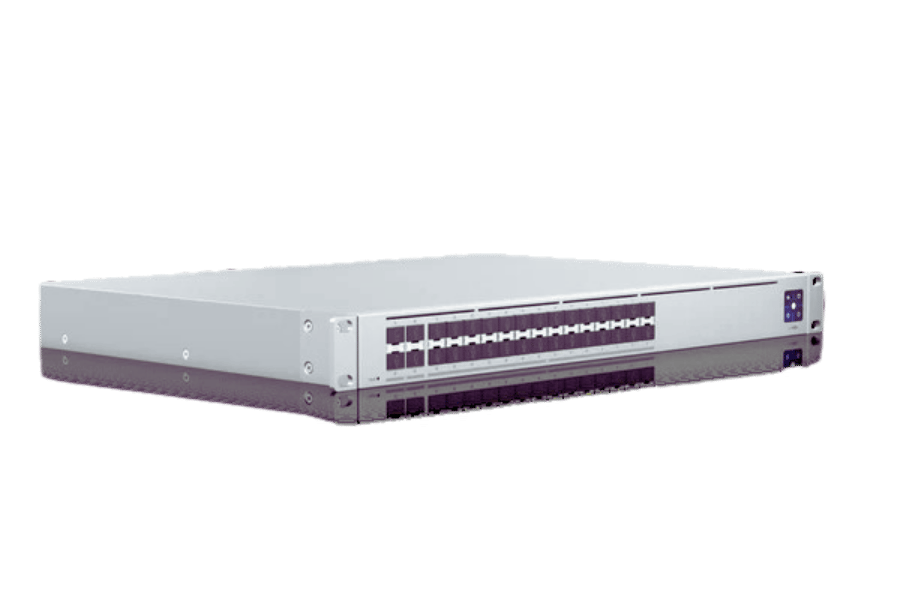
Setting up the Ubiquiti Networks USW-Aggregation
These are the steps to set up the Ubiquiti Networks USW-Aggregation:
Initial Setup:
- Connect the USW-Aggregation switch to your network and power it on.
- Log in with your credentials through the UniFi Controller or the Ubiquiti Network Management System (UNMS) and access the switch.
Configuration via UniFi Controller:
- Go to the Devices tab of the UniFi Controller. Look for your USW-Aggregation switch here.
- You can configure various things by clicking on it which will open its settings menu.
VLAN Configuration:
- Designate VLAN IDs for specific ports under Ports settings.
- Properly segment your network by setting up VLAN tagging (IEEE 802.1Q).
Link Aggregation:
- For higher throughputs and redundancies, you can do this in Port Aggregation section.
- Choose multiple ports that should be aggregated and enable IEEE 802.3ad Link Aggregation Control Protocol (LACP).
- Assign them to different LAG groups.
Quality of Service (QoS):
- Differentiate between types of traffic based on their priorities at QoS settings so that important ones don’t get choked up along way because they are waiting behind less crucial packets
Security Settings:
- Ensure unauthorized persons cannot gain entry into your system by enabling port isolation and configuring Access Control Lists (ACLs) that deny them rights to do so
Final Review and Apply Changes:
Check previously made configurations to ensure they are correct before saving them permanently
Monitor how well everything works after implementing these changes so you know if it meets all expectations or not
Connecting and managing ports on the unifi switch
Connecting as well as looking after ports on a UniFi switch can be quite a lot of work. The first thing you need to do is get into the UniFi Controller. Once there, go to the section called “devices” and find your switch model that matches its description. Then click on it so that all settings may show more detail about what each button does.
Connecting Ports:
- The very next thing that you should do is physically connect Ethernet cables to their respective positions in the switch.
- Also in these settings, there will be a place labeled “Ports.” Go ahead and navigate there, too! You will see a visual representation of status for every port that exists on this device according to what has been plugged into them or not yet plugged into them.
- To confirm whether or not anything has been plugged correctly or incorrectly, check port LEDs and status indicators located where I said they would be found earlier when talking about finding your specific switch’s detailed setting menu within the UniFi controller itself (refer back up if needed).
Managing Ports:
- Port Profile: Every single one of these ports needs its own role assigned to it, called Assigning Profiles. Examples are Default Trunk Management, etc.
- VLAN Assignment: Depending on how many VLANs are used throughout this network environment, allocate each necessary vlan individually towards those specific ports It’s also possible segregate different parts of network traffic using these tags efficiently
- Port Settings: For everything to work together harmoniously, adjust things like speed duplex mode power over ethernet flow control, which will depend upon requirements device by device attached at any given time
Monitoring & Maintenance:
- Monitor tools activity errors performance metrics may be done through monitoring tools provided by Unifi controller Use Monitoring Tools Port Activity Errors Performance Metrics
- Setup alerts for problems such as downed link abnormal traffic pattern detection Ensure Alerts Set Up Port Down Abnormal Traffic Pattern Detection
- Regularly review updates with changes in topology regchanges
If you follow all these instructions, your UniFi switch ports will always work well, creating a nice network setting.
Using the unifi controller for simplified network management
To make network management easier, I work with the UniFi Controller. First, I verify that all my network devices are adopted by the controller. I do this by logging into the UniFi Controller dashboard through a web interface or mobile app and then going to the “Devices” tab to see if they are listed. Once my equipment becomes visible and is online, I use different tools provided by the controller to manage everything in my network.
Initially, I set up basic configurations for each device depending on how they will be used. The interface is easy to understand, so I can quickly assign IP addresses and create wireless networks, including VLANs, where necessary. Every part of this software has been designed with simplicity in mind; therefore, it gives me a unified view of various sections such as devices, clients, or insights tabs from where I can easily check device status and traffic flow information as well as detect potential issues.
In addition to that, what I normally do is keep an eye on analytics that is happening in real-time plus an alert feature; this way, any abnormality within network performance gets detected earlier enough. Also looking at these statistics frequently will enable me fine tune my networks hence allowing them to grow according to demand thus making it not only easier but also more reliable for managing overall infrastructure efficiency levels across different sites connected through internet connections using various types of WAN links such as MPLS VPNs or SDWAN solutions like Cisco Meraki MX series routers among others.
What Are the Performance Metrics of the Ubiquiti Networks USW-Aggregation?
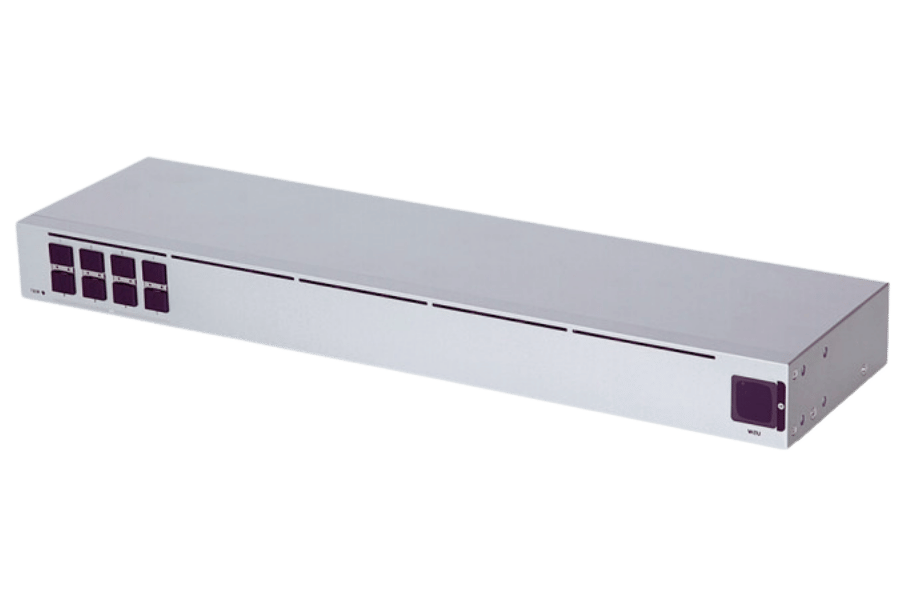
Measuring switching capacity and throughput
To quantify Ubiquiti Networks USW-Aggregation’s switching capacity and throughput, it is necessary to comprehend its hardware specifications and performance indicators. USW-Aggregation has been designed to possess Layer 2 switch capabilities with non-blocking throughput of up to 160 Gbps. These high throughputs are enabled by 10G SFP+ ports, which allow for fast data transfer within the network.
The switching capacity for USW-Aggregation is rated at 320 Gbps, meaning that it can handle large amounts of traffic without losing any packets. This metric shows how much data a switch can manage in one second, thereby contributing to effective network performance, especially in environments with a heavy flow of data. Moreover, this switch supports line-rate forwarding, hence ensuring low latency and optimal processing all the time, which are essential in maintaining high-performance network infrastructure.
Maximizing performance with SFP transceivers
In order to get the most out of SFP transceivers, I look for good ones that are compatible and meet my network equipment’s standards like Ubiquiti Networks USW-Aggregation. This ensures the highest data transfer speeds possible by using 10G SFP+ transceivers which contribute to a non-blocking throughput switch up to 160 Gbps. To keep them working together at their best it is important that I update both the firmware on my switches and theirs as often as necessary but no less frequently than required by either party involved. Proper cable management also needs to be implemented so signal loss and electromagnetic interference are minimized as they can affect performance not only for these devices but across an entire network too.
Examining 10 GB connectivity and gigabit support
While investigating 10gb connectivity and gigabit support, I lay stress on knowing the difference between these two standards as well as their interrelationship. In terms of cost and efficiency, gigabit ethernet is the best option as it can transmit data at a speed of up to one billion bits per second (1Gbps). Because of this feature, many network structures use it worldwide. But when it comes to environments like virtualized systems, data centers, or high-performance computing where there is a need for wider bandwidths, a 10 GB connection is a must-have since its speed goes up to ten billion bits per second (10Gbps), thus greatly improving throughput while lowering latency.
To integrate 10gb connectivity effectively into mainly gigabit ethernet supported networks, they should be made compatible with existing infrastructures. For instance; Ubiquiti Networks USW-Aggregation switch that supports both modular switches capable of supporting either standard can be used together with 10G SFP+ transceivers. What is required is proper network design with gradual upgrading from GbtoGb so that devices that function at different rates may communicate without any disruptions happening between them.
I make sure that my organization uses all the available resources by closely matching network capacities with its needs, hence improving overall performance reliability scalability of a system not only based on GB but also taking into consideration other factors such as distance covered by cables and number of users involved among others.
Why Choose the USW-Aggregation by Ubiquiti for Your Network?
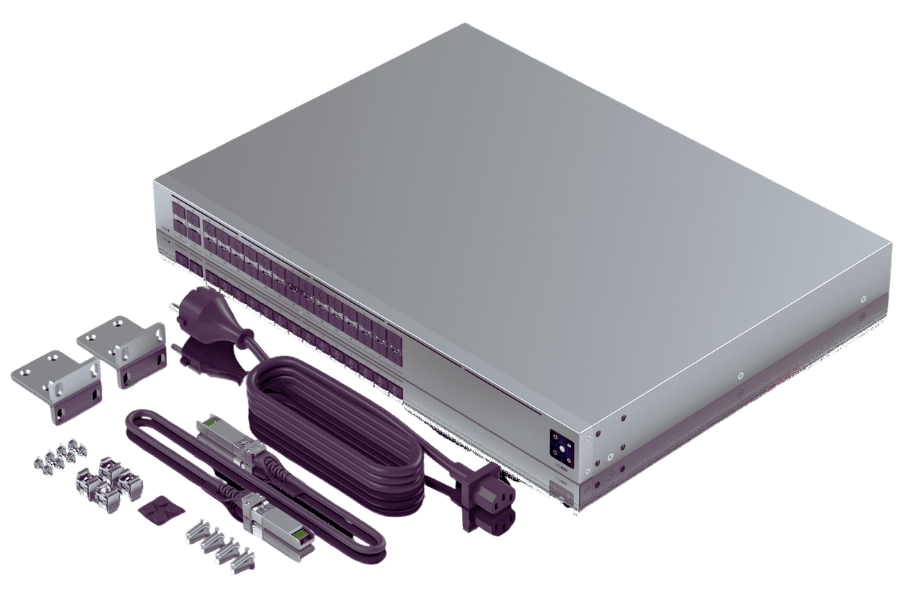
Advantages of a fanless design
If we choose the USW-Aggregation made by Ubiquiti, one of the things that makes me is its fanless design, which greatly reduces noise. This feature is especially useful in small server rooms and office environments where people work because their productivity and comfort can be affected by high noise levels. Also, this switch does not have any mechanical fans, which is why it becomes more reliable and lasts longer since such devices often break down as they are known to be common failure points in network hardware. Lastly, the lack of a fan contributes to energy saving. On top of this, it is already an energy-efficient design, hence cutting operational expenses while reducing carbon footprint. These reasons alone demonstrate how much quieter operation adds up with better dependability plus savings leading to modern networking requirements being met by USW-Aggregation.
Comparison with other network switches like Mikrotik and TP-Link.
When you compare the USW-Aggregation by Ubiquiti with other network switches such as Mikrotik and TP-Link, there are numerous things to consider. For one thing, what makes the USW-Aggregation different from other network switches is its design that lacks fans; this not only means quiet operation but also increased dependability and reduced power consumption. Conversely, both Mikrotik and TP-Link have models with active cooling which can be noisy or become another point where failure may occur. Also, the user-friendly nature of Ubiquiti’s interface, coupled with its easy integration into other Ubiquiti products for a harmonious ecosystem where everything works together, simplifies the management of networks on lots of levels at once. In addition to being configurable to a high degree while still giving strong performance everywhere, sometimes mikrotic switches can get more complicated during setup and management thus becoming less ideal for some users who are not able or willing to deal with complexity. On the flip side, tp-link is commonly known for its cheapness as well as fulfilling basic needs only, but it might lack certain advanced features or stability found in ubiquity products. In my opinion, I believe that if you want your network environment(s) to stay reliable all year round without much hustle about noise then go ahead and choose USW Aggregations made by Ubiquiti
Availability and pricing at the Ubiquiti Store
As of the most recent information given to me, the Ubiquiti USW-Aggregation switch is now for sale in the official store of Ubiquiti and other officially recognized retailors. The initial cost of a USW Aggregation is typically around 279 dollars, but this may vary depending on where you live and any promotions they have going on at the time. When you buy straight from UBNT shop, they will give you real equipment plus all benefits that come with it like warranties and support. If you want to know how much something actually costs or if there are any current deals then look up pricing on their site directly!
Reference sources
Frequently Asked Questions (FAQs)
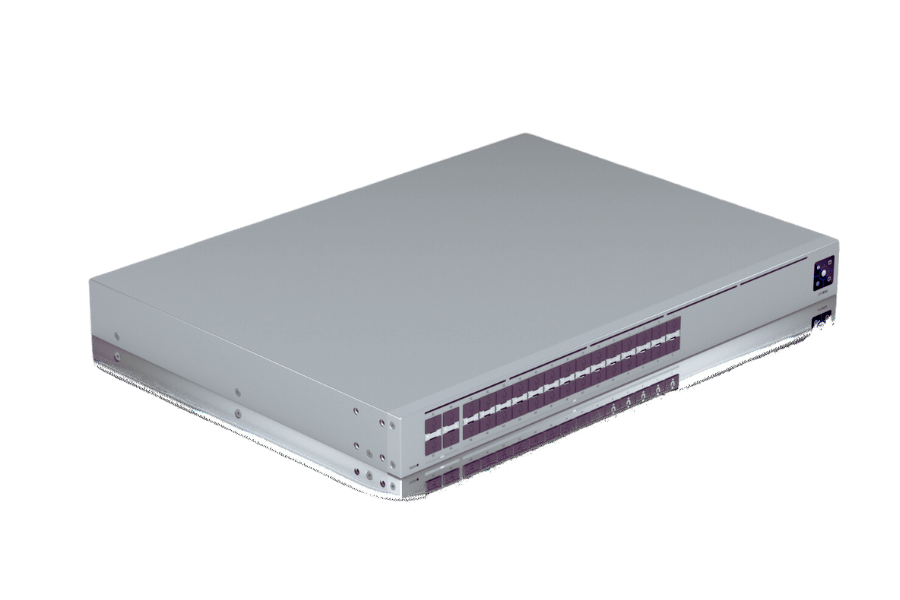
Q: What is the USW-Aggregation from Ubiquiti Networks?
A: The USW-Aggregation is an advanced aggregation switch of the Unifi series of Ubiquiti Networks, which was designed with eight 10G SFP + ports for high-capacity link aggregation and a powerful running Unifi Network.
Q: How many ports does the USW-Aggregation have?
A: The USW-Aggregation has eight 10G SFP+ ports that offer high-speed connectivity, making it ideal for aggregation switching within a Unifi Network.
Q: Can the USW-Aggregation handle 10Gbps speeds?
A: Yes, the USW-Aggregation supports 10Gbps speeds through its eight 10G SFP+ ports, ensuring fast data transfer between devices in your network.
Q: Is the USW-Aggregation a managed switch?
A: Yes, the USW-Aggregation is an 8-port managed layer-2 switch with advanced management functions for increased network control.
Q: Does the USW-Aggregation support link aggregation?
A: Yes, it does. For higher capacity; thereby boosting network bandwidth while at it MS (multiple simple) redundancy improvements.
Q: Why is it good for aggregation switching?
A: Its ideal choice as an aggregate switcher includes its ability to handle large volumes of traffic coming from different points in the form of eight (8) X 1OG SFP+ ports and its ability to manage layer two networks efficiently, hence providing strong performance.
Q: Does USW-Aggregation support PoE?
A: No, USW-Aggregation doesn’t have Power over Ethernet (PoE) support. Instead, it provides high-speed data transfer using its 10G SFP+ ports which is its main aim.
Q: Can USW-Aggregation be used in existing Unifi networks?
A: Yes, USW-Aggregation can be used with Unifi networks that are already in place, thereby allowing better management and performance through Unifi Controller.
Q: What are the main uses of USW-Aggregation?
A: Some of the common use cases for USW-Aggregation are high-capacity link aggregation, connecting data centers as well as providing high-performance networking in enterprise environments.
Q: What management features does it offer?
A: Amongst others, you get VLAN support, advanced network monitoring, and configuration via Unifi Controller for more robust control over your network from USW-Aggregation.
Recommend reading: What is an Aggregation Switch?
